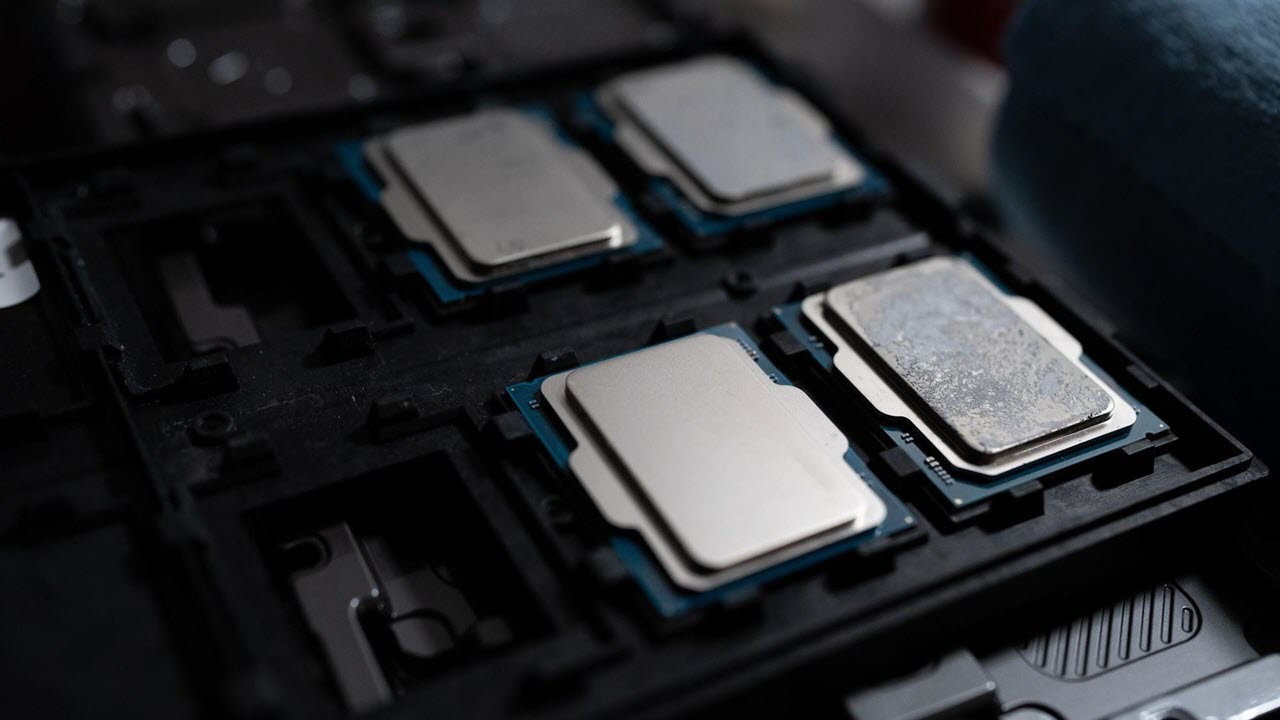Intel Nova Lake CPUs reportedly get a GPU overhaul — Xe3 Celestial and Xe4 Druid IPs used for graphics, media, and display

Intel's upcoming Nova Lake chips are expected to advance their modular design philosophy by bringing together future Xe3 and Xe4 IPs to handle different engines on the chip. Jaykihn, an avid Intel leaker, asserts that Nova Lake-S will allegedly use Celestial for its graphics engine. At the same time, Druid will handle media and display functions, likely on a separate SoC Tile.
The disaggregated chiplet design, introduced for consumers with Meteor Lake, provides Intel with the flexibility to manufacture less critical chip elements using mature and cheaper fabrication nodes. Meteor Lake splits the media and display capabilities from core graphics. The media and display units were placed on a separate System-on-Chip (SoC) chiplet, manufactured using TSMC's N6 process, while the graphics engine resided on a separate tile produced with TSMC's N5 technology.
A similar strategy has been observed in Lunar Lake and Arrow Lake, however, Nova Lake reportedly is poised to advance Intel's chiplet approach by using separate and specialized IPs for these blocks. Jaykihn claims that the integrated graphics (iGPU) on Nova Lake-S (S: Desktop) will be powered by Xe3 (Celestial), meanwhile, the graphics and media engine move to the more advanced Xe4 (Druid).
Xe3 graphics + Xe4 display & mediaJune 4, 2025
This means that while the integrated GPU will be impressive, the most notable improvements could be in hardware codec support, owing to the shift to a next-generation architecture. Meanwhile, Bionic_Squash reports that the graphics engine will utilize a slightly modified version of Xe3, for better or worse. Should it be an improvement over vanilla Xe3, which we'll see in Panther Lake, it might be comparable to the evolution from Meteor Lake's Xe-LPG to Arrow Lake's Xe-LPG+ (mobile-only), the latter of which introduced XMX engines.
Beyond Nova Lake, this is a positive indication for future graphics products from Intel. We could see the first Druid-powered engines by as early as 2026, while Celestial, which is already undergoing pre-validation, is slated to power Panther Lake CPUs next year. It is plausible to say Nova Lake might serve as a test vehicle for Druid, serving as a precursor to a full-fledged product in the future that employs Druid graphics as well.
Follow Tom's Hardware on Google News to get our up-to-date news, analysis, and reviews in your feeds. Make sure to click the Follow button.
Get Tom's Hardware's best news and in-depth reviews, straight to your inbox.

Hassam Nasir is a die-hard hardware enthusiast with years of experience as a tech editor and writer, focusing on detailed CPU comparisons and general hardware news. When he’s not working, you’ll find him bending tubes for his ever-evolving custom water-loop gaming rig or benchmarking the latest CPUs and GPUs just for fun.
-
usertests Desktop iGPU improvements are arguably more important for Intel, because they go into so many OEM office PCs, and end up flooding the used market later.Reply
Fully enabled Arrow Lake-S iGPUs are faster than the 5700G (Vega 8). Also faster than the 8500G (Radeon 740M - RDNA3 @ 4 CUs) at 1080p but slower at 720p according to TechPowerUp's review.
Only Core Ultra 5 235/225 models have compromised iGPUs (3 and 2 Xe Alchemist cores respectively).
If Intel moved to 8 Xe3 Celestial cores for Nova Lake-S, maybe you could see tripled performance, around an Arc A380 or RX 6400. Just a guess. That would have legitimate low-end 1080p performance.
On the media engine side, Lunar Lake is the latest. It adds H.266 (VVC) decode only, and I think AV1/H.265/VP9 support is the same, so only up to 10-bit encode for AV1/VP9, and 12-bit encode with 4:2:0 chroma subsampling for H.265. So there's room for improvement. There hasn't been much news about the AV2 codec so it probably won't be ready to go into a 2026 product like Nova Lake. -
edzieba ReplyMeteor Lake splits the media and display capabilities from core graphics. The media and display units were placed on a separate System-on-Chip (SoC) chiplet, manufactured using TSMC's N6 process, while the graphics engine resided on a separate tile produced with TSMC's N5 technology.
One upshot of this could be that Quicksync support becomes available on '-F/-KF' suffix processors, which is not the case currently (with the encode block being part of the GPU and disabled along with it). Though with the GPU moving off-die, it's entirely possible that it wont be subject to the yield behaviour that created the need for the '-F' line in the first place. -
thestryker Reply
ARL still has F SKUs (below 285) and disabled Quick Sync on them despite the display/media engines being in the SoC tile and there being a separate Graphics tile.edzieba said:One upshot of this could be that Quicksync support becomes available on '-F/-KF' suffix processors, which is not the case currently (with the encode block being part of the GPU and disabled along with it). Though with the GPU moving off-die, it's entirely possible that it wont be subject to the yield behaviour that created the need for the '-F' line in the first place. -
thestryker Reply
I would be surprised if they did this even though utilizing tiles makes it very much possible. If they shifted to using EMIB for connecting the Graphics tile it would be trivial to change the tile configuration. I'm not sure this would be a fiscally responsible move compared to using Foveros for the whole die as they do now though.usertests said:If Intel moved to 8 Xe3 Celestial cores for Nova Lake-S, maybe you could see tripled performance, around an Arc A380 or RX 6400. Just a guess. That would have legitimate low-end 1080p performance.
If it was you could see F SKUs that simply didn't have a graphics tile, regular SKUs that had binned 4 core tile and then maybe G SKUs with binned 12 core tile (assuming PTL leaks are correct about top bin being 12 Xe3 cores). If the performance was there I could easily see them commanding a decent premium since there would be no performance disadvantages as there have been with AMD's APUs. -
anemusek Reply
And who will produce it? TSMC, seized together with Taiwan by China until the end of the year, or maybe IF, which is losing contracts because it is unable to supply enough wafers because China has cut it off from raw materials? The latest attempts at sanctions on EDA show how panicked the US isAdmin said:Intel's next-gen Nova Lake CPUs for desktops are expected to use Xe3 (Celestial) for the integrated graphics, while media and display move to Xe4 (Druid).
Intel Nova Lake CPUs reportedly get a GPU overhaul — Xe3 Celestial and Xe4 Druid IPs used for graphics, media, and display : Read more -
User of Computers Reply
I'd say that improvements aren't what really matters, what matters is that it's there and is able to do all the normal 2D computer things. The fact that it can run games, in the OEMs' mind, is nothing more than an afterthought.usertests said:Desktop iGPU improvements are arguably more important for Intel, because they go into so many OEM office PCs, and end up flooding the used market later.
Fully enabled Arrow Lake-S iGPUs are faster than the 5700G (Vega 8). Also faster than the 8500G (Radeon 740M - RDNA3 @ 4 CUs) at 1080p but slower at 720p according to TechPowerUp's review.
Only Core Ultra 5 235/225 models have compromised iGPUs (3 and 2 Xe Alchemist cores respectively).
If Intel moved to 8 Xe3 Celestial cores for Nova Lake-S, maybe you could see tripled performance, around an Arc A380 or RX 6400. Just a guess. That would have legitimate low-end 1080p performance.
On the media engine side, Lunar Lake is the latest. It adds H.266 (VVC) decode only, and I think AV1/H.265/VP9 support is the same, so only up to 10-bit encode for AV1/VP9, and 12-bit encode with 4:2:0 chroma subsampling for H.265. So there's room for improvement. There hasn't been much news about the AV2 codec so it probably won't be ready to go into a 2026 product like Nova Lake. -
usertests Reply
Yet Intel still basically doubled iGPU performance going from Alder/Raptor Lake to Arrow Lake, leapfrogging the Radeon 610M iGPU in AMD's desktop non-APUs.User of Computers said:I'd say that improvements aren't what really matters, what matters is that it's there and is able to do all the normal 2D computer things. The fact that it can run games, in the OEMs' mind, is nothing more than an afterthought.
If they do nothing at all but swap Xe1 with Xe3, that should yield a substantial improvement. But they could have plenty of die area to add additional cores, if the node is much better. The Arrow Lake-S iGPU tile is made on TSMC N5P. If Intel eats their own dog food for Nova Lake... 18A? -
Mr Majestyk But will AMD still persist with their trash tier iGPU in Medusa Ridge and insult us with 2CU's yet again.Reply -
abufrejoval Reply
I'd just consider it a wise expense of transistors where they matter most.Mr Majestyk said:But will AMD still persist with their trash tier iGPU in Medusa Ridge and insult us with 2CU's yet again.
Spending transistors on an iGPU where either a dGPU is present or the use case is CPU-only, is mostly a waste. I was surprised they even put in an iGPU back in with Zen 4.
And once I actually got off my high rocker and started testing it, I found it was rather capable and useful, even with a dGPU plugged in. Because it a) is a rather decent 2D display engine for 4k at HDR and 144 Hz, the best my screens are capable of and b) because it allows dGPU pass-through processing without much of a performance penalty. It even allowed refresh rates and pixel depths the dGPU didn't support natively on its physical outputs. The biggest surprise was how easily it got along with pretty near every dGPU I threw at it, from ancient Maxwell Nvidias to an Intel B580.
And then it allows my to have a display output for the hypervisor when I use the dGPU via pass-through in a VM, which can be handy.
Imagine having a Strix Halo iGPU and then adding the dGPU for real gaming or AI power: all those extra transistors wasted!
Intel in the past has made CPUs which used more than half of the die area spent on an iGPU, that they basically gave away for free, e.g. GT3 variants of Broadwell and Skylake which even included 64/128MB of eDRAM, only to keep the chipset and dGPU competition from gaining a foothold.
AMD crashed that gate by converting that iGPU chip area into twice the number of cores instead and the rest is history.
Sometimes it's just not that obvious how clever they are.